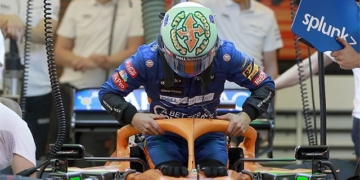This is the most unique zoo in the world, holding the “key” to reviving species at risk of disappearing completely from Earth.
For a Future Without Extinct Species
When Professor Kurt Benirschke, a researcher at the University of California San Diego, began collecting skin samples from rare and endangered animal species in 1972, he did not have a concrete plan for what to do with them.
All Mr. Benirschke had was the belief and hope that one day these skin samples would be used to save the very species that were on the brink of extinction.
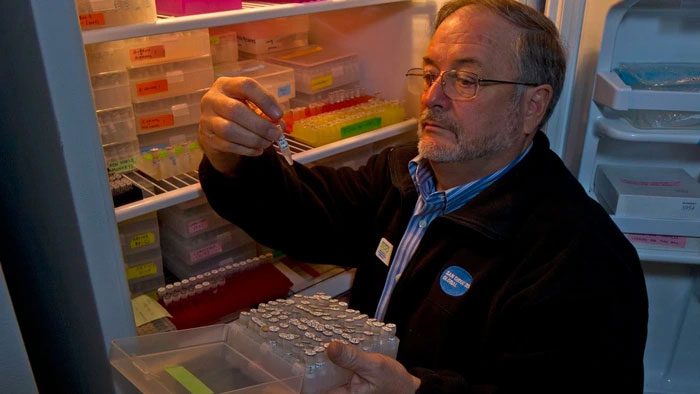
Mr. Oliver Ryder, a geneticist at the San Diego Zoo.
Years later, he transferred his collection to the San Diego Zoo and named it the “Frozen Zoo.” While it may sound unusual, this is the most unique zoo in the world, holding the “key” to reviving species that are at risk of completely disappearing from Earth.
Mr. Oliver Ryder, a geneticist at the San Diego Zoo and an early collaborator, stated: “There is a famous poster hanging above the Frozen Zoo with Mr. Benirschke’s words: ‘You should collect everything for reasons you may not understand yourself.’ We felt that this collection would be valuable for the future in ways we could not anticipate.”
In 2018, Mr. Benirschke passed away, but his efforts continue to be carried on. Now, the “Frozen Zoo” is the largest frozen animal bank in the world, with samples from over 10,500 individual animals of 1,220 species.
For a long time, this was the only project of its kind in the world, aiming to maintain the genetic lineage of species. However, in recent years, similar conservation efforts have emerged worldwide, and the cloning tools that Mr. Benirschke did not have are now available. This is also when alarm bells began to ring for species at risk of extinction.
An Irreplaceable Repository
CNN cited the Living Planet Report from the World Wildlife Fund (WWF) in 2020, stating that since 1970, populations of mammals, birds, amphibians, reptiles, and fish have declined by an average of 68%.
The report also highlighted that habitat loss due to human activities is the main cause. One million plant and animal species are threatened with extinction in the coming decades and centuries.
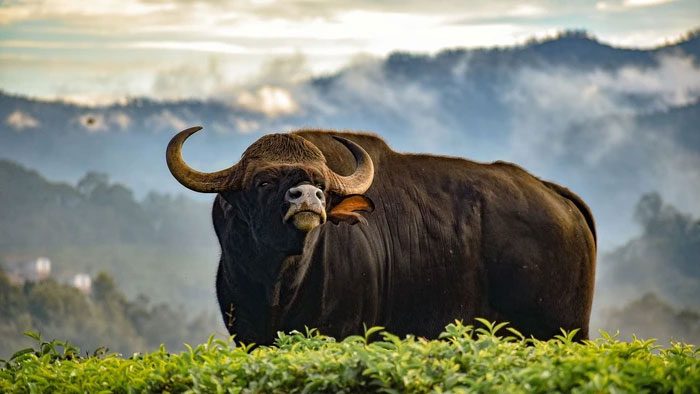
Since 1970, populations of mammals, birds, amphibians, reptiles, and fish have declined by an average of 68%
Given the current rate of biodiversity decline, some scientists believe that preserving samples from species “that may not exist on Earth tomorrow” is not just a long-term vision but an imperative task.
Mr. Ryder stated: “We have gradually realized that we hold an irreplaceable repository to save very rare animal species. Because we have their cells in the Frozen Zoo. Now we can apply new techniques and technologies to expand our understanding, gaining more information directly related to preventing the extinction of endangered species.”
Since the Frozen Zoo’s establishment, the field of genetics has reached many significant milestones, starting with the cloning of the first animal—a sheep named Dolly—in 1996.
Beginning in 2001, four endangered species have been cloned using genes. Documentation from the “Frozen Zoo” shows that many species are at risk of imminent extinction.
For example: the Indian bison, the Asian gaur, Banteng (a type of cattle in Southeast Asia), the Przewalski’s horse (a species once found throughout Mongolia and recently extinct in the wild), and the black-footed ferret (thought to be extinct in the wild until it reappeared in 1981, but then nearly wiped out by a disease).
Gene Rescue
Although cloning is not yet perfect, for instance, cloned Indian bison only lived for 48 hours. However, it is a useful tool to help “revive” endangered species, as it can increase genetic diversity. When a species’ population declines, the remaining animals are forced to inbreed, which narrows the gene pool, further threatening survival.
For example, black-footed ferrets cloned in 2020 from samples collected in 1988 mean their genetic profile is much more diverse than the current population.
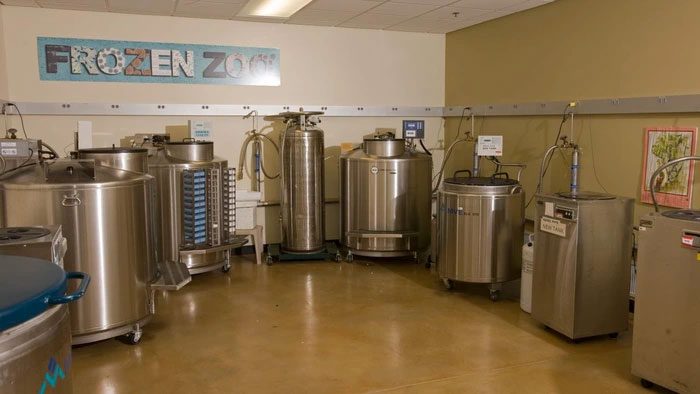
At the Frozen Zoo, specimens are kept in cold storage.
“In an animal species, genetic diversity is what gives it resilience, the ability to recover from natural disasters, viral attacks, and diseases,” according to Brendon Noble, a professor of regenerative medicine at the University of Westminster in London and chairman of the board of The Frozen Ark, a frozen animal bank based in the UK.
The Frozen Ark was established in 2004 with a similar goal to the “Frozen Zoo” but with a different structure: instead of a single collection tied to one organization, it is a distributed network of over 20 units, including zoos, museums, and universities around the world.
Although the Frozen Ark has more samples than the Frozen Zoo—48,000 samples from 5,500 species—about 90% of these consist of DNA rather than living cells, used in different ways and must be stored at much lower temperatures.
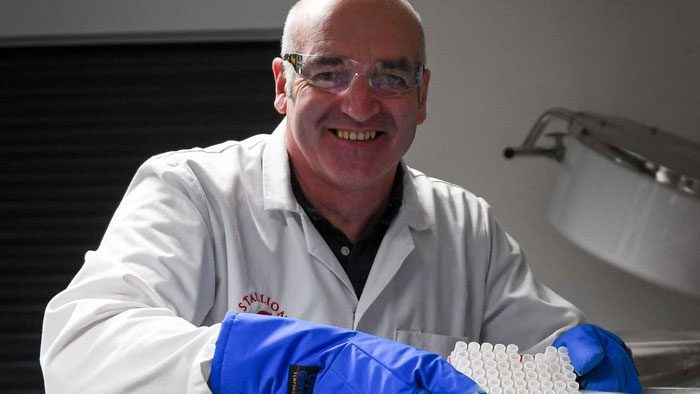
Mr. Tullis Matson from Nature’s Safe, a storage organization based in the UK specializing in collecting live cells and gametes.
Ms. Lisa Yon, an associate professor of zoo and wildlife medicine at the University of Nottingham and a scientific advisor, stated: “That information can be used for many different scientific studies, from cancer research to understanding recovery processes like regrowing limbs.”
“By saving these resources, we will allow not just current scientists but also future generations of scientists to make all kinds of new discoveries,” she added.
He commented: “I see cryopreservation as the absolute foundation of conservation. We are facing the sixth mass extinction.”
The Challenges Ahead
The increasingly severe climate crisis is putting additional pressure on Earth’s ecosystems, making the work of these “frozen banks” even more critical.
“I see cryopreservation as the absolute foundation of conservation,” said Mr. Tullis Matson from Nature’s Safe, a UK-based storage organization specializing in collecting live cells and gametes.
“We are facing the sixth mass extinction, and thus we need to provide future generations with a pathway to bring ‘potentially extinct’ species back to life.”
There are many practical issues that these projects face. Marlys Houck, the manager of the Frozen Zoo, stated: “Ensuring the Frozen Zoo is protected in the distant future is one of the biggest challenges. We want to continue collecting more samples while ensuring that the samples we already have will still be there even when we are no longer around. This includes securing funding specifically for liquid nitrogen [to freeze DNA] and replacing freezers as they age.”





















































